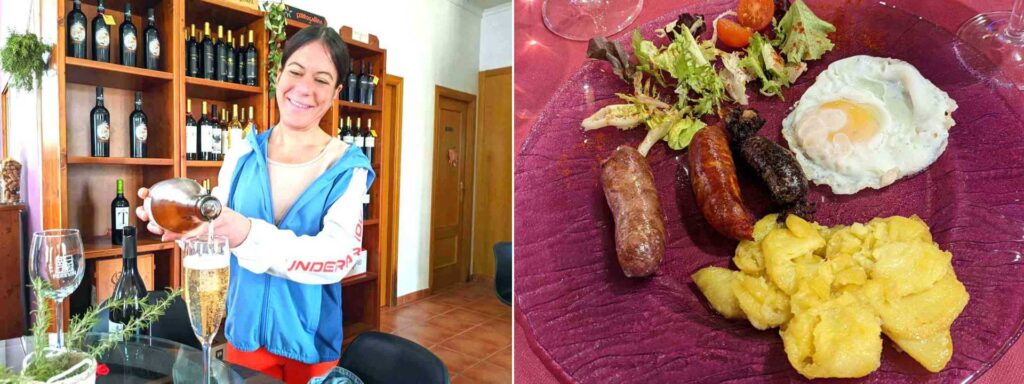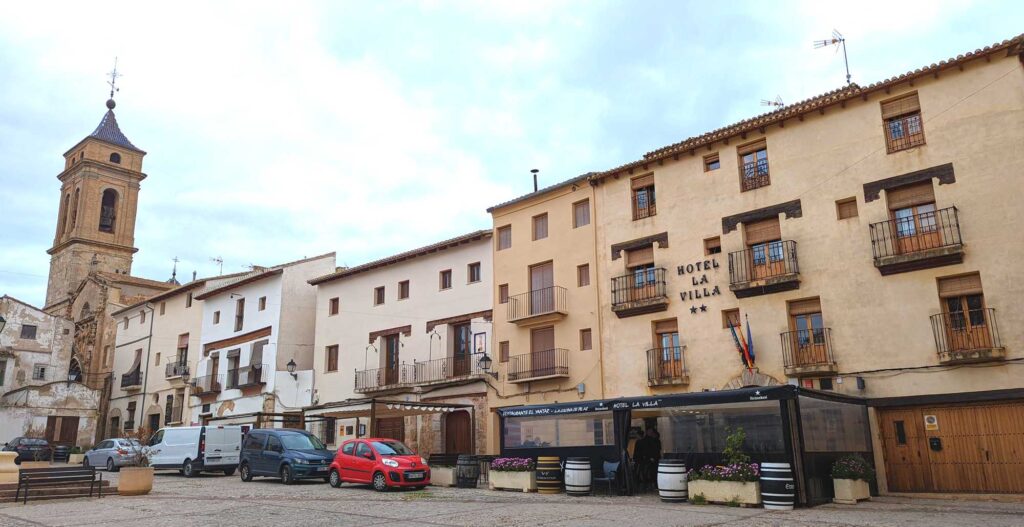
The ease of wine touring in the United States has spoiled us. Wine tourism in the Valencia region requires more planning. The wineries are largely rural and unreachable by public transit, and visits and tastings are usually by reservation. Most serious oenophiles book a tour of several bodegas and lunch with one of a handful of companies in Valencia. We decided to do it on our own. Reasoning that the most important district was D.O. Utiel-Requena and that Requena had the most wineries, we headed there on the C3 local train. That’s the old city plaza at the top of this post.
Requena is about 40 miles inland, but the trip takes nearly two hours. The train backtracks on one spur and negotiates some slow bridges over mountain gorges. Out the window, we saw ancient vineyard after ancient vineyard. Historically, Bobal is the grape of the region and some vines are a century or more old. The age helps depress the natural vigor of the grape and keep yields down and quality up.
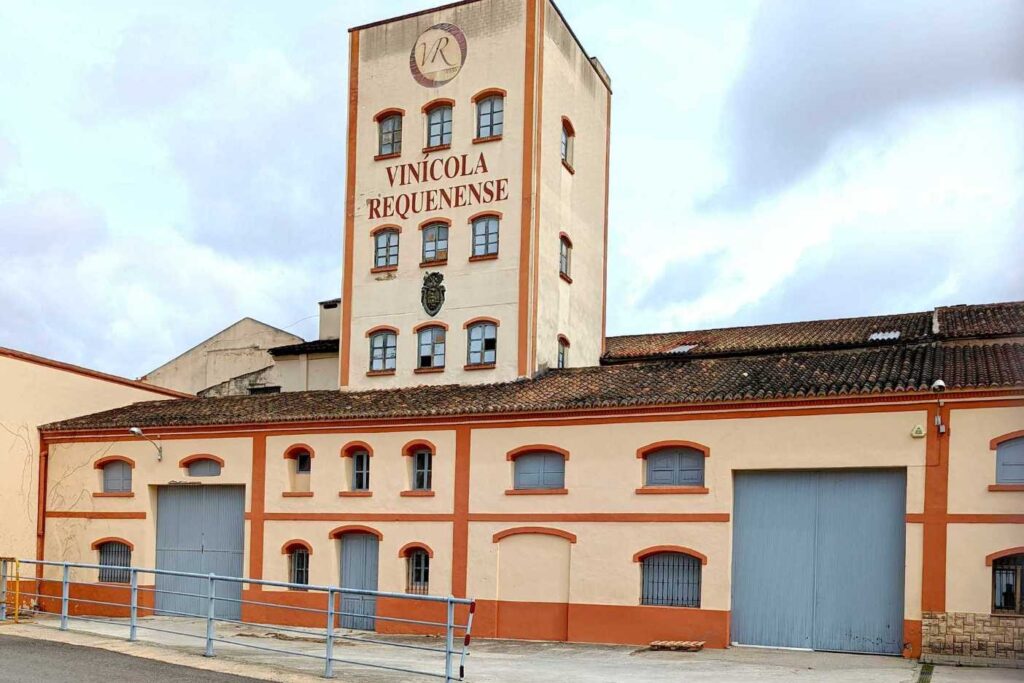
Detailed advance information was hard to get, but we did know that Cooperativa Vinicola Requenense at the edge of town (Av. Rafael Duyos, 6; 962 30 03 50; vinicolarequenense.es) would be open. We didn’t know that on weekdays, it was open only for wine sales and was doing a brisk business. Tastings and tours are only offered on Saturday or Sunday at 10 a.m., 11:30 a.m., or 1 p.m. The woman at the register, however, pointed us to some other spots in town for tasting and gave us a good recommendation for trying the famous local sausages.
Into town in search of wine
So we hiked back to town to the landmark late medieval fortress around which the old city had coalesced. In the 1970s, the city discovered a network of underground caves around what most folks refer to as the castello or castle. Researchers found that the caves had been used mainly as refuge in time of war and as storage for grain and wine. Alas, we arrived just as videographers were setting up their equipment and the caves were closed to the public. Normally, the Cuevas de la Villa (Plaza de Albornoz, 6; 962 306 018; requena.es) are open Wednesday through Monday.
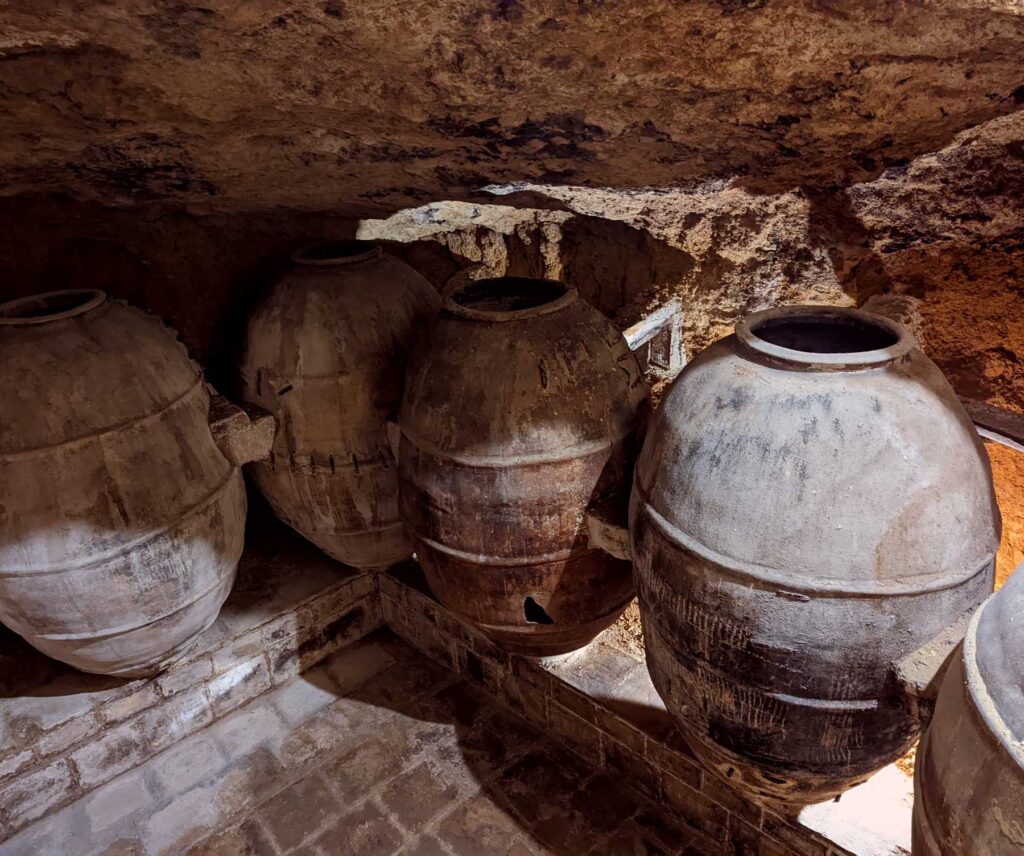
On the same plaza, we did discover one major winery where we could have tasted and toured had we made advance reservations. That was Murviedro (Plaza de Albornoz 10; 962 955 998; murviedro.es). The winery tour includes the caves under their building, which they hint have some connection to winemaking going back to the fifth century. The company, however, dates from 1927. The standard visit lasts 45 minutes and includes tastes of two wines for €7.
We persevered. As we followed a warren of tiny streets through the atmospheric old city, we found the Palacio del Cid (c/Somera 15; 962 303 281; requena.es/enlace/palacio-del-cid-museo-del-vino-requena). Now the city’s wine museum, the 15th century stone building sits on the foundations of a fortified structure where legend holds that El Cid and Alfonso VI met back in the 11th century. We finally saw a few wine caves here, along with ancient amphorae. Honestly, the earnest recounting of viticultural history, complete with displays of old presses and farm implements, is not without interest. But we were more ready to taste the wines than study their history.
Finally, the real flavors of Requena
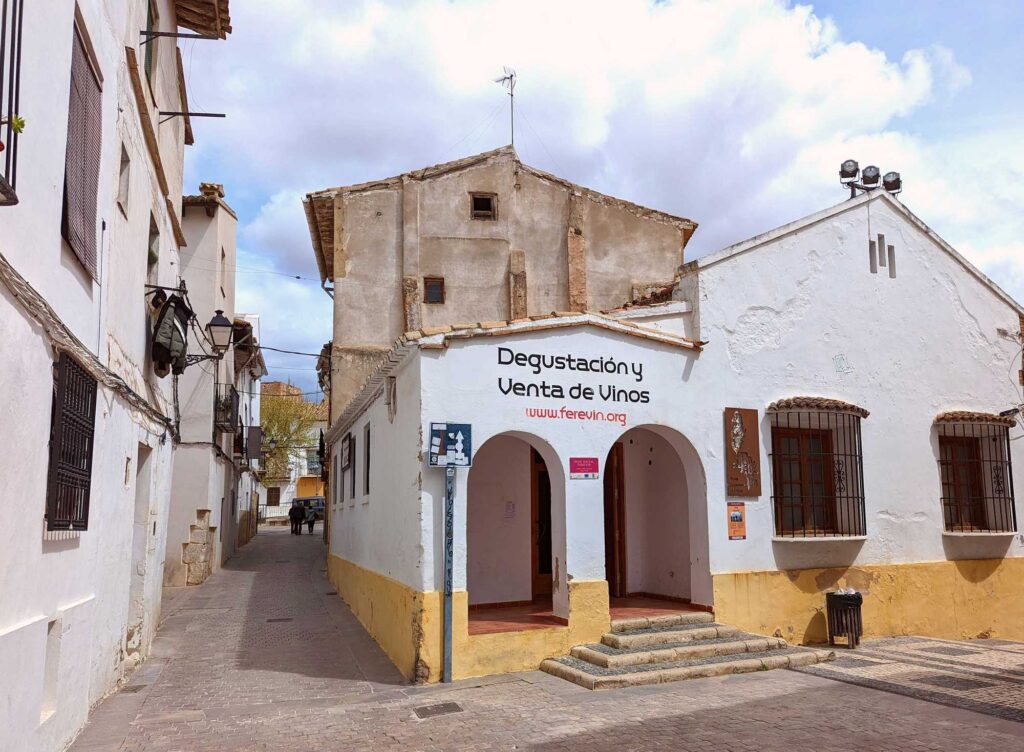
The woman at the cooperative recommended Ferevin (c/ Cuesta de Las Carnicerías; 962 305 706; ferevin.org) for a tasting. It did not disappoint. The shop represents 27 area wineries. Open daily, it pours a few selected wines for €2-€3 each. We tasted a dry white Terra de Tardor that spoke of the landscape with its slight pine scent behind the flowers of Macabeo and bright acid of Sauvignon Blanc. More interesting was the Capraisa rosé made from Bobal and Merlot. The Bobal flavor dominated but the malolactic fermentation of the Merlot gave the wine a suave softness.
No straight Bobal was on offer, so we sampled Vitis Miguel de Maria, a Tempranillo/Bobal blend that had been aged in French and American oak. The oak was too pronounced until the wine had time to breathe. With a little air, the Bobal aromas took over while the Tempranillo provided a tannic backbone.
Maybe the most interesting wine was Joy Ancestral, a natural sparkling wine made from Chardonnay (or “xardoné” in Valenciano). That’s Paz at Ferevin pouring a glass at bottom left. Fermented with natural yeast and bottled with a crown cap, it was delightfully bright and crisp with good varietal expression. Unlike cava, the yeast deposit has not been disgorged. It gave an unfiltered taste of the countryside.
Known for its grilled meats, Mesón Fortaleza (Plaza Castillo 3; 962 305 208; restauranteenrequena.com) is a great place to sample Requena’s deeply flavored and spiced sausages (embutidos). The plate looked a little scant—one each of morcilla (blood sausage), chorizo, and longaniza (a mixed pork and beef sausage). But the savory, lean links made a filling meal, even without the fried egg. A glass of Bobal didn’t hurt, of course.
